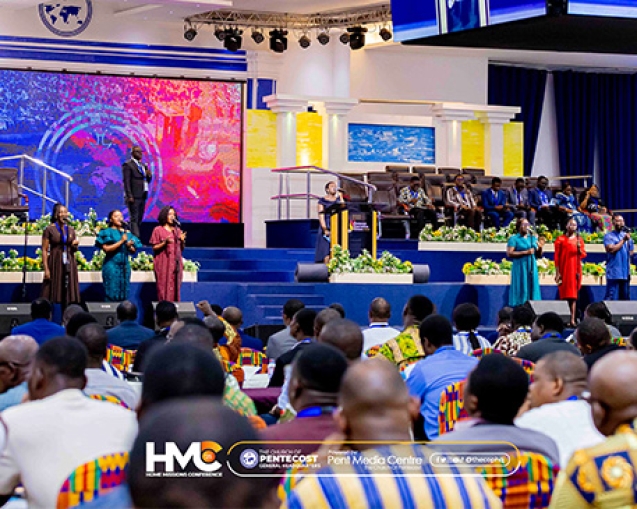INTRODUCTION
The Old Testament foretold the death of Christ. Gen. 3:15 says that Satan, the Serpent, would ‘bruise’ the head of the special person to come. The mystery of the cross of Christ is depicted by the serpent of bronze, a type of Christ “made sin for us” in bearing the penalty we deserved. “And as Moses lifted up the serpent in the wilderness, even so must the Son of Man be lifted up” (John 3:14).
We deserved to die in place of Christ, but He rather died for our sins. Christ took the punishment on Himself in our place. “He substituted himself for us and took what we rightly deserved. God made him who had no sin to be sin for us so that in him we might become the righteousness of God” (2 Cor. 5:21).
22 What shall I do, then, with Jesus who is called Christ?” Pilate asked. They all answered, “Crucify him!” 23 “Why? What crime has he committed?” asked Pilate. But they shouted all the louder, “Crucify him!” 24 When Pilate saw that he was getting nowhere, but instead an uproar was starting, he took water and washed his hands in front of the crowd. “I am innocent of this man’s blood,” he said. “It is your responsibility!” 25 All the people answered, “Let his blood be on us and on our children!” 26 Then he released Barabbas to them. But he had Jesus flogged and handed him over to be crucified (Matt 27:22-26, NIV)
This write-up seeks to look at the ten stages of suffering Jesus went through during the crucifixion and the significance of these sufferings to the world.
DEFINITION OF TERMS
CRUCIFY: The English dictionary defines “crucify” to mean to execute a person by nailing to a cross. Or to punish or otherwise express extreme anger at, especially as a scapegoat or target of outrage.
CRUCIFIXION: This historical method of capital punishment involves tying or nailing the victim to a large wooden beam, leaving them to hang for several days until they succumb to exhaustion and asphyxia. The word “crucifixion” comes from the Latin word “crucifixio” or “crucifixus,” meaning “fixed to a cross.” The Greek word for the crucifixion is staurōsē (σταυρώσει). It comes from the verb stauroō (σταυρόω), which means “to crucify.”
CRUCIFIXION IN HISTORY: In antiquity, crucifixion was considered one of the most brutal and shameful modes of death. The Persians systematically used it in the 6th century BC, likely originating from the Assyrians and Babylonians. Alexander the Great brought it from there to the eastern Mediterranean countries in the 4th century BC, and the Phoenicians introduced it to Rome in the 3rd century BC. Pre-Hellenic Greece rarely used it. Constantine I abolished crucifixion in the 4th century AD after the Romans perfected it for 500 years. Crucifixion in Roman times was applied mostly to slaves, disgraced soldiers, Christians, and foreigners—only very rarely to Roman citizens. Death, usually after 6 hours–4 days, was due to multifactorial pathology: after-effects of compulsory scourging and maiming, haemorrhage, and dehydration causing hypovolemic shock and pain, but the most important factor was progressive asphyxia caused by impairment of respiratory movement. Resultant anoxemia exaggerated hypovolemic shock. Death was probably commonly precipitated by cardiac arrest, caused by vasovagal reflexes, initiated, among other things, by severe anoxemia, severe pain, body blows, and breaking of the large bones. The attending Roman guards could only leave the site after the victim had died and were known to precipitate death by means of deliberate fracturing of the tibia and/or fibula, spear stab wounds into the heart, sharp blows to the front of the chest, or a smoking fire built at the foot of the cross to asphyxiate the victim.
STAGES OF CHRIST’S SUFFERING LEADING UP TO HIS CRUCIFIXION
HE BEGAN TO BE SORROWFUL (MATT. 26:37): He was depressed because he was under a great deal of stress about what lay ahead of him. He didn’t mind the physical death, but he feared the spiritual death—that is, the separation from his father, God. It was in Gethsemane that he experienced this agony. This location represents “Torculus Olei,” an olive mill that grinds oil. There, the Lord was pleased to “bruise” and crush him so that all believers would receive fresh oil from him.
SPIT STRUCK AND SLAPPED (MATT 26:67): This is the second stage of suffering Jesus went through. After his arrest, the disciples abandoned him, and he was brought to Caiaphas and the Jewish Council. They blindfold him, repeatedly ridicule him, spit on him, and hit him in the face.
HANDED HIM OVER TO PONTIUS PILATE (MATT. 27:2): The third stage of suffering took place the next morning. Pilate, the Roman governor of the region, takes Jesus, already battered and exhausted, through Jerusalem to question him. Reluctant to sentence Jesus, he offers to release him. But the leaders and the crowd refused to let Jesus go and asked instead for the release of the notorious robber Barrabas. Jesus is flogged and handed over to be crucified. Note that from the place of Caiaphas to Pilate, it is nearly a mile. Jesus’ hands have been clipped at his back to cross Jerusalem by foot to this place.
PILATE HAD JESUS FLOGGED (MATT. 27:26): Flogging was the fourth stage of Christ’s sufferings leading up to his crucifixion. Roman flogging involved stripping the victim of his garments, stretching him against a pillar or bending him over a low post with his hands tied. The instrument of torture was a short wooden handle that had several strips of leather attached to it. Interwoven into the pieces of leather were bits of iron or bones. Two men usually whip the victim, one lashing the victim from one side and the other from the other. This led to severe cuts in the flesh, exposing veins, arteries, and sometimes even inner organs. Sometimes, victims died during the flogging. Flogging was a brutal form of torture. The severe flogging that Jesus endured was surely the greatest physical reason he was not able to carry his own cross all the way to Golgotha. “But he was pierced for our transgressions; he was crushed for our iniquities; the punishment that brought us peace was upon him, and by his wounds, we are healed” (Isaiah 53:5, 1 Peter 2:24)
A SCARLET ROBE …A CROWN OF THORNS (MATT. 27:28-29): The Roman soldiers position Jesus in the middle, drape a robe across his shoulder, place a stick in his hand, and press a circle of branches covered with long thorns into his hand. The soldiers make fun of him as they hit him across the face and head, diving the thorns deeper into his scalp.
LED HIM AWAY TO CRUCIFY HIM (MATT. 27: 31): This stage involved tying a heavy beam to his shoulders. He began the slow journey to Golgotha. The weight of the wooden beam, together with the severe physical exhaustion, causes him to fall. He tries to rise but cannot. Simon is forced to carry the cross of Christ.
THEY … CRUCIFIED HIM (MATT. 27:35): This took place at Golgotha (a hill called ‘Skull’ where executions were often performed). The cross beam is placed on the ground, and Jesus is laid on it. He stretches his arms along the beams, driving a heavy, square, wrought iron nail through his hand and deep into the wood. Next, he lifts the cross using ropes or ladders, and ties or nails the cross beam to an upright beam that has a support attached to it.
HURLED INSULTS AT HIM (MATT. 27:39): The eighth stage of suffering involves personal humiliation from those who witnessed this gruesome event and came by to observe the public execution. By now, Jesus is a pathetic spectacle, blood-streaked, covered with wounds, and exposed to all views. He experienced hours of pain in the body—fatigue in the arms, great waves of muscle cramps, and skin torn from the back. Eventually, another aspect of agony begins: a crushing pain deep in his chest as fluid builds up, quenching his breath and compressing his heart. He feels an intense thirst (John 19:28) and is well aware of the abuse and ridicule of those who pass by the cross. Those who raised insults at Jesus were the passers-by, the chief priests, the elders, and the robbers too.
THE FATHER FORSAKEN HIM (MATT. 27:46): This is perhaps the worst and most fearful suffering Jesus went through before his death. It is not only involved in physical torture but also in the spiritual anguish of an unimaginable sense of separation from God, which is the ultimate consequence of sin. His saying in Aramaic, “My God, My God, why have thou forsaken me?” indicates that Christ experienced the separation from God that was in store for all people as a result of sin. We cannot fully comprehend the sense of abandonment that Jesus felt as he hung on the cross. Here, we see God’s son, the creator of the universe (John 1:1–3), not only rejected by man but also isolated from the one who is everywhere. Even though he had never sinned, God made him “to be sin for us.”
JESUS … CRIED OUT AGAIN (MATT 27:50): At the final stage of the suffering surrounding Christ’s death and sacrifice for our sins, Jesus cries out in a loud voice, “It is finished” (John 19:30). These final words mark the end of his sufferings and the completion of his mission to pay the ultimate price for our sins and restore our opportunity for a personal relationship with God.
THE SIGNIFICANCE OF CHRIST’S SUFFERING
The significance of Christ’s suffering is a central theme in Christian theology and has various theological, spiritual, and ethical implications.
REDEMPTION AND ATONEMENT: Christian doctrine posits that Christ’s suffering, particularly his crucifixion, served as the ultimate sacrifice to atone for humanity’s sins. The idea of atonement relies on this deed, asserting that Jesus’ death restored the relationship shattered by sin and united humanity and God.
VICTORY OVER SIN AND DEATH: Christ’s suffering and resurrection symbolise the triumph over sin and death. Jesus showed that he was willing to submit to God’s will by going through suffering and dying on the cross. This provided believers with a means to overcome sin and secure eternal life.
IDENTIFICATION WITH HUMAN SUFFERING: The perception of Jesus as fully identifying with human suffering stems from his own personal experiences. Believers going through their own hardships can find solace and hope in this part of Christ’s suffering because they know they have a sympathetic and caring Saviour who shares their suffering.
EXAMPLE OF LOVE AND SACRIFICE: Many people hold the view that Christ’s suffering represents the height of love and selflessness. It offers Christians a role model to follow, inspiring deeds of kindness, forgiveness, and service to others.
FULFILMENT OF PROPHECY: Christians believe that Christ’s suffering and death fulfilled many Old Testament prophecies, highlighting the historical continuity and fulfilment of God’s plan of salvation.
CONCLUSION
We must be convinced that our Lord Jesus did, in fact, die for us, and we must rely only on Him. For believers, relying on their own discernment and guidance is highly unsettling. Christ has made it possible for us to depend on Him for almost everything through His death. He commands us to obey him completely, and we must rely solely on him. Being obedient to his righteous feet and following His example.
Written by Pastor Bismark Aidan (Apam District)


















